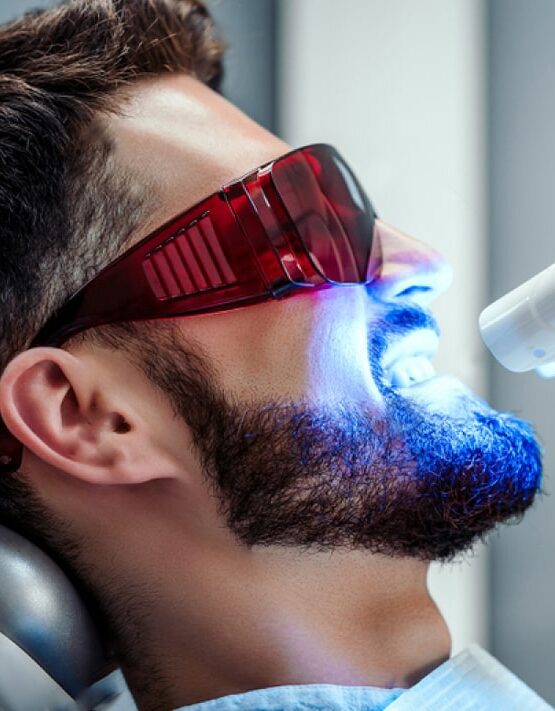Teeth Whitening (Bleaching)
What is teeth whitening?
Teeth whitening (bleaching) is the process of lightening the tooth tone and giving it a natural appearance without abrading the teeth or coating the teeth with any substance.
How is teeth whitening done?
Whitening can be done with 2 different methods: ''Office bleaching'' and ''Home bleaching''. Office bleaching is applied by the dentist in the clinic. In the bleaching process, the gums are first protected with barriers. Special gels for teeth whitening are applied on the teeth. When the active substance in these special gels breaks down, it releases oxygen. Oxygen penetrates into the teeth and lightens the tooth color. With the laser beam, the reaction is accelerated and the color change in the teeth is achieved more quickly. It is possible to provide effective whitening in a short period of about 1 hour.
How long does the whitening effect last?
The whiteness obtained after bleaching lasts approximately 6 months to 2 years. This period may vary from person to person. Frequent consumption of products such as tea, coffee and cigarettes will reduce this period. The first week after whitening is very important to extend this period. In this first week, substances that stain teeth should be avoided.

Does teeth whitening damage teeth?
Research and microscopic studies have shown that teeth whitening does not cause any harm. There is no research showing that teeth whitening causes structural changes and permanent damage to the teeth.
What are the side effects of teeth whitening?
Some patients may be sensitive to hot or cold after the procedure. This is a normal and expected side effect. Tooth sensitivity usually resolves within 24-48 hours.
Is it possible to treat discoloration of a single tooth with whitening?
Among the causes of single tooth discoloration, we can count factors such as trauma, previous root canal treatment and fluorosis. Single tooth whitening is also called "devital bleaching". First of all, root canal treatment is checked, and if root canal treatment has not been performed, it is performed before bleaching. The canal of the tooth is opened and bleaching agent is placed into the tooth. The bleaching agent is kept in the tooth for about 1 week. The same procedures can be repeated for several sessions until the tooth color reaches the desired whiteness. After the tooth color is lightened, the tooth is filled with a permanent filling and the opening on the back surface is closed.
What to consider after teeth whitening?
After whitening your teeth, you should avoid foods and drinks that can cause discoloration. You should avoid colored drinks such as tea, coffee, wine, cola and cherry juice, and foods that can give color such as red beets, strawberries and blackberries. You should pay more attention to this, especially in the first week. You should definitely stay away from smoking, which is the biggest enemy of whitening.
In which cases whitening is not performed?
Bleaching is not performed in patients with severe gingival recession, pregnant and nursing mothers, teeth with large pulp chamber, teeth in childhood and adolescence and severe enamel loss.
Do teeth whiten at the same rate for everyone?
Teeth whitening treatment does not give the same results for everyone. How much the tooth color will lighten depends on the structure of the tooth. Generally, there is an increase in whiteness between 4 and 8 tons.
Are whitening toothpastes effective?
Whitening toothpastes do not affect the natural tooth color. They can be effective in removing discoloration on the teeth. Since whitening toothpastes mechanically clean the teeth, they can damage the tooth enamel in long-term use.



